This is the preparation work, required for the May 2015 Oracle Technology Network (OTN) Virtual Technology Summit (VTS) . Four times a year come OTN hosts this event, where you can join us to learn first-hand from Oracle ACEs, Java Champions, and Oracle product experts, as they share their insight and expertise on using Oracle technologies to meet today’s IT challenges. In the May 2015 session, I have a Hand on Lab that shows you step by step, bow to migrate RHEL to OL.
To register for the event, click here;
http://www.oracle.com/technetwork/community/developer-day/index.html
First, we need to create a VM in VirtualBox.
Select New form the VBox Menu
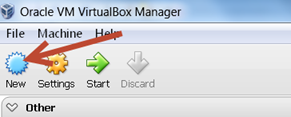
Select the name and operating system. In this case we will use Linux, 6Red Hat (64bit) for the OS.
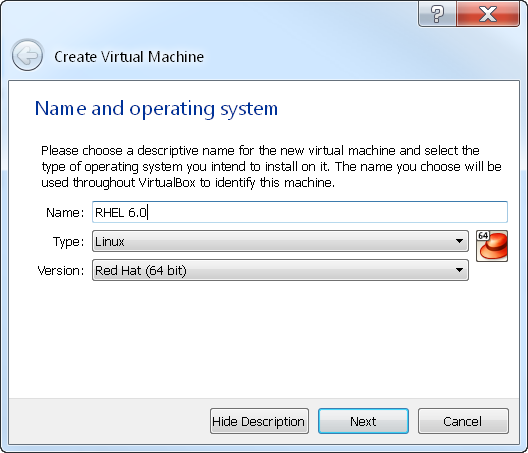
Set the memory, for this example small is fine. We can always grow it later.
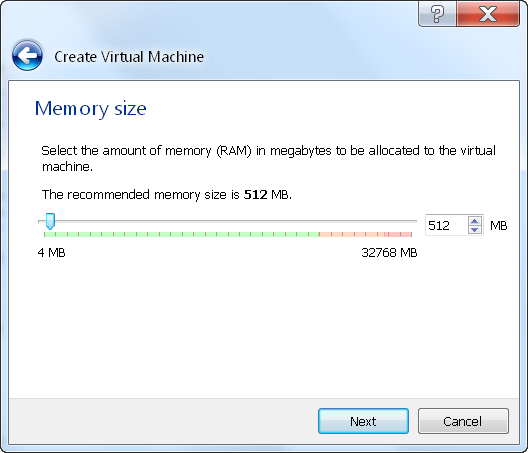
Now we setup the virtual disk. For this example, it will be a 20G disk using the vdi format.
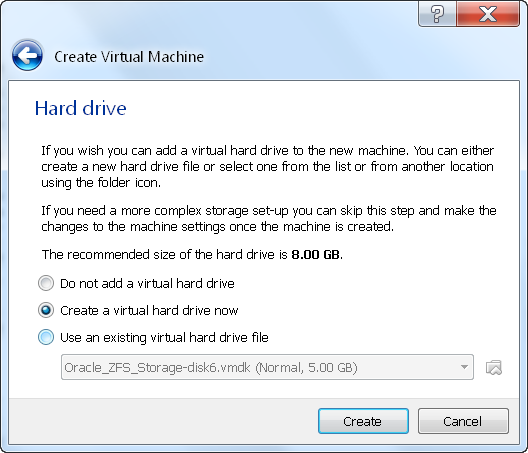
VDI should be fine for now. We will setup a small disk for this test.
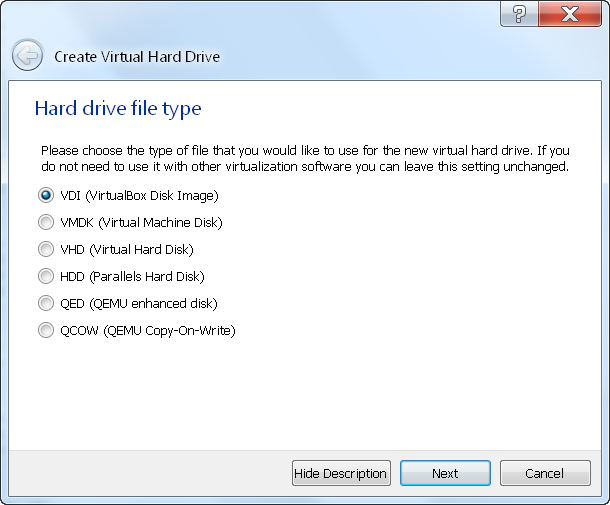
Dynamically allocated disk have an advantage that the disk file only consumes the actual space the underlying VM uses. So if we create a 20G disk, but the installation only consumed 3G, we only take 3G of space. There is a small performance penalty in doing this, but for a Hands on Lab you will likely never notice it.
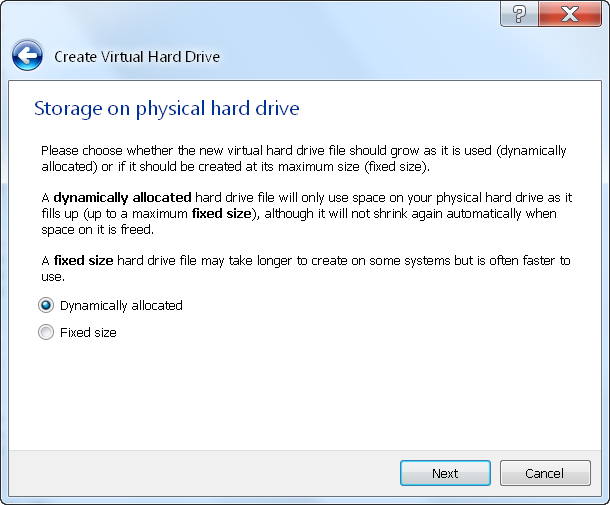
For this test, we will allocate up to 20G of disk space.
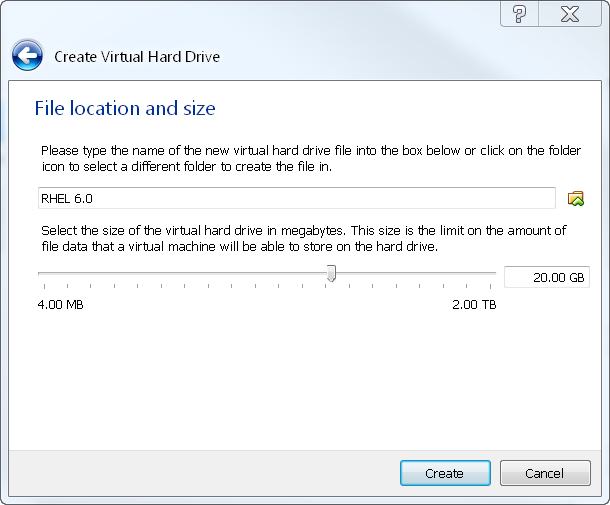
Now we have a VM, we need to make a few small changes.
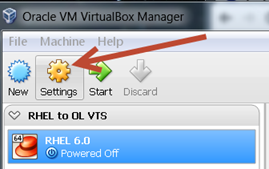
Go to System, the change the CPU to 2. This helps the install run faster. When we deploy we can always add more CPU as needed.
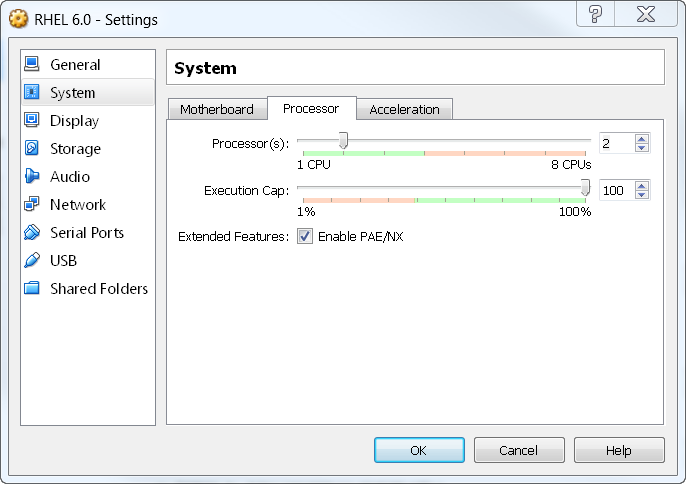
For now we will use a Bridged Adapter. If you have multiple NICs on your system, please be careful to select the NIC that has internet access.
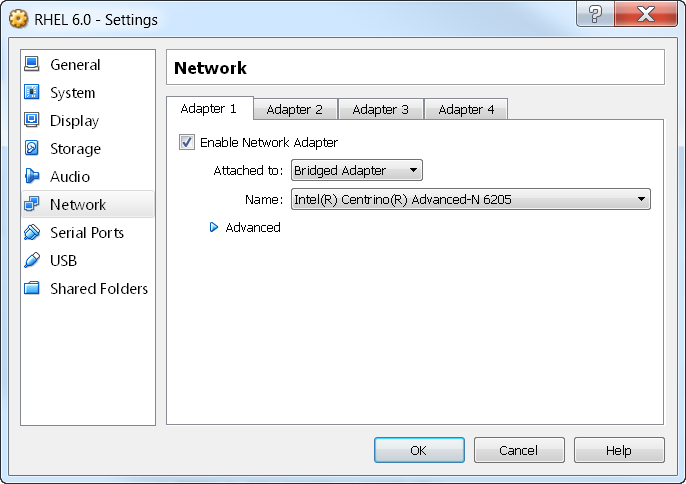
An ISO helps to boot from, so we can install the OS.
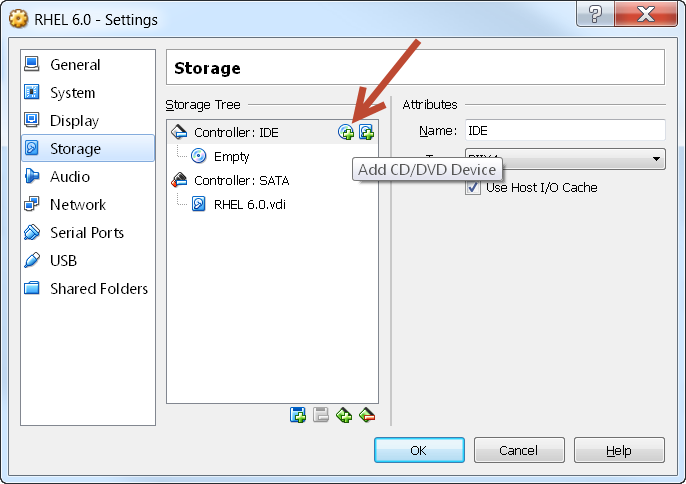
Chose the disk
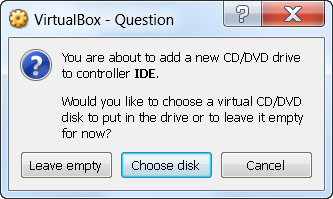
Using RHEL6 for this sample. In this case, it is a bootable ISO image.
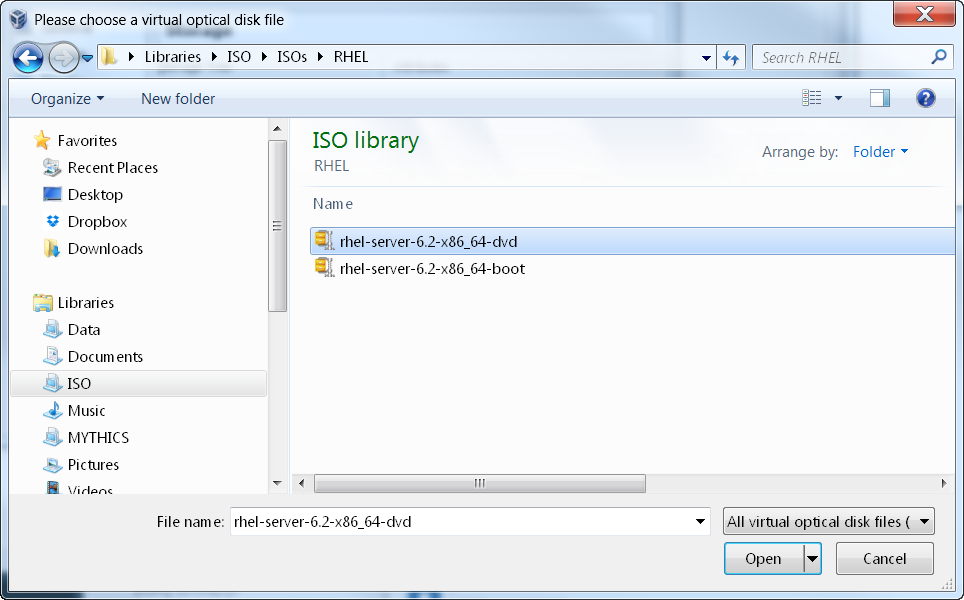
Your media should look similar to this now
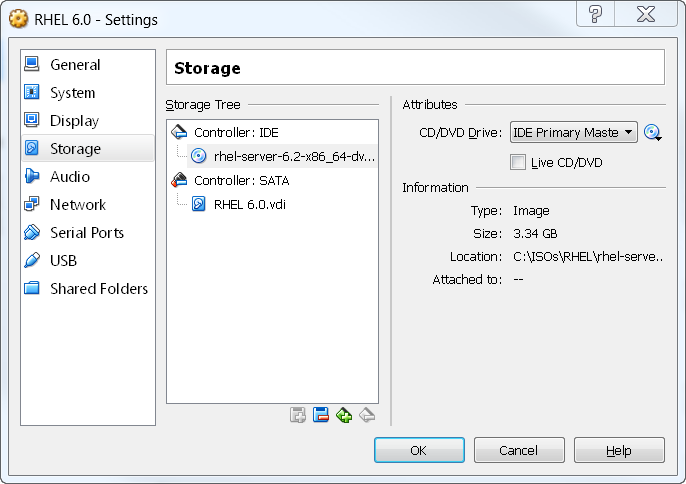
We now need to update the boot order, go to the System tab and deselect the floppy, and move the Hard Disk to the top. It should look like this now.
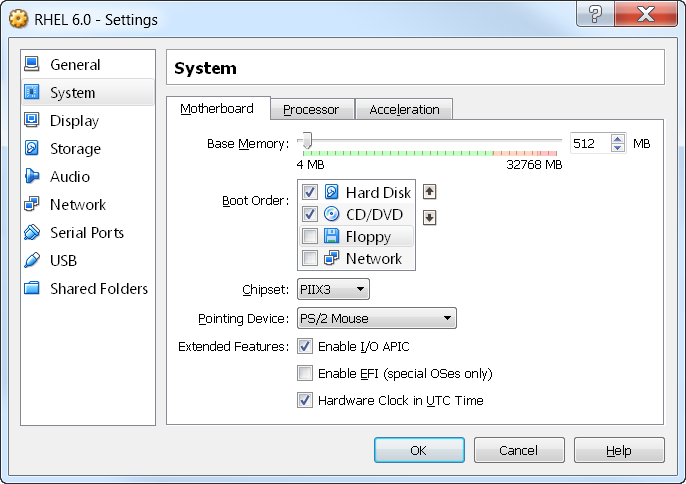
When done, click OK.
Now start the VM

And run the installer
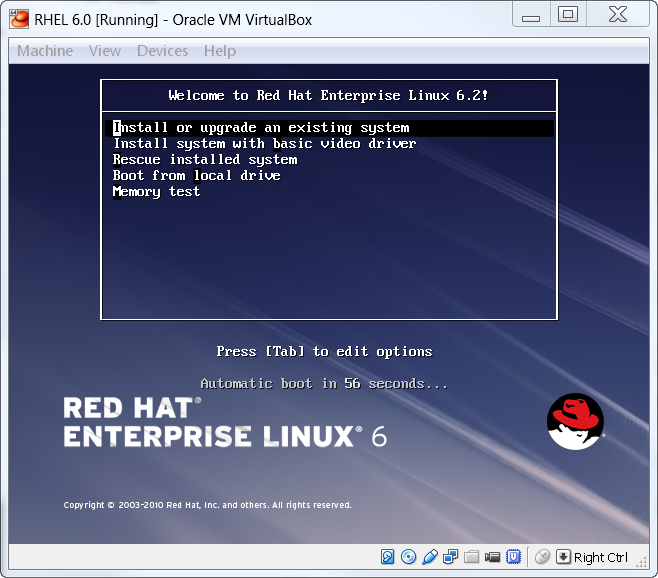
We should be able to skip the media check;
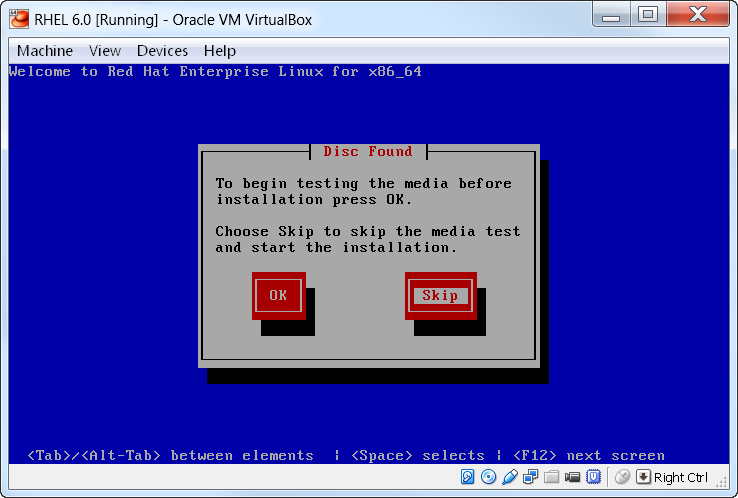
After a few seconds you should see this
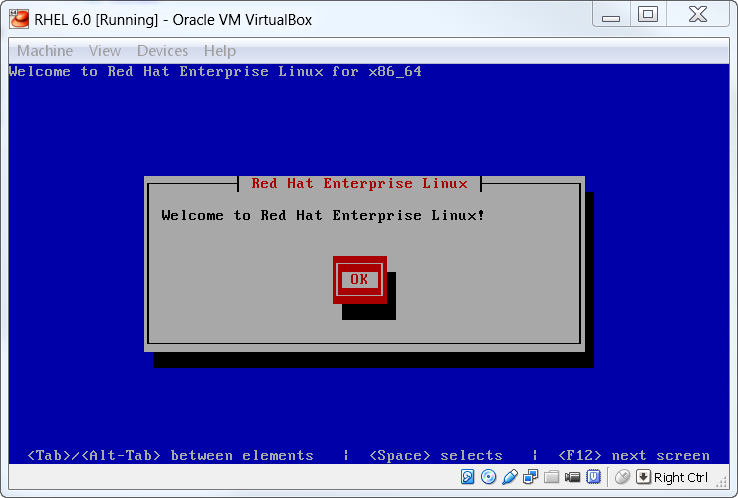
Click OK
English for this sample
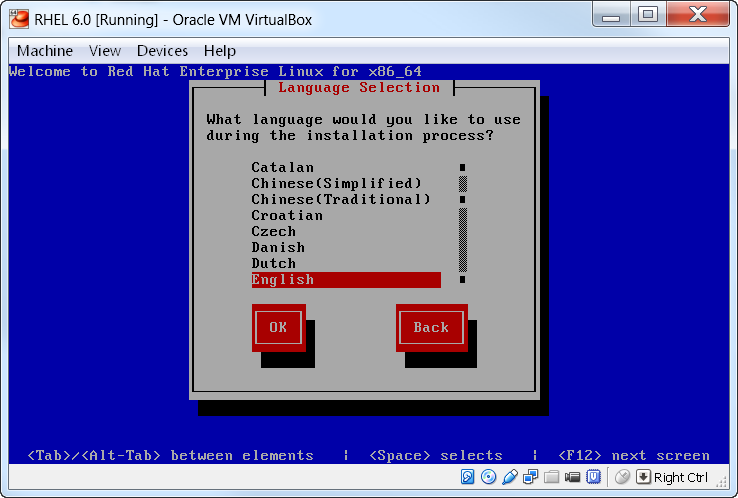
And now we will set the keyboard
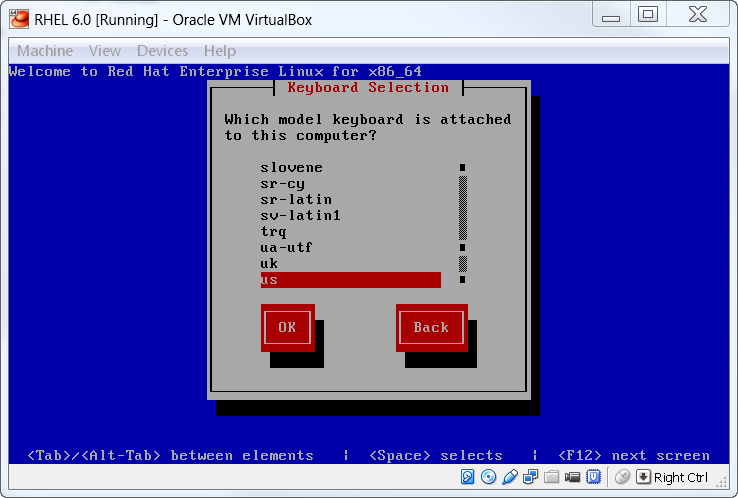
We now will initialize the entire virtual disk;
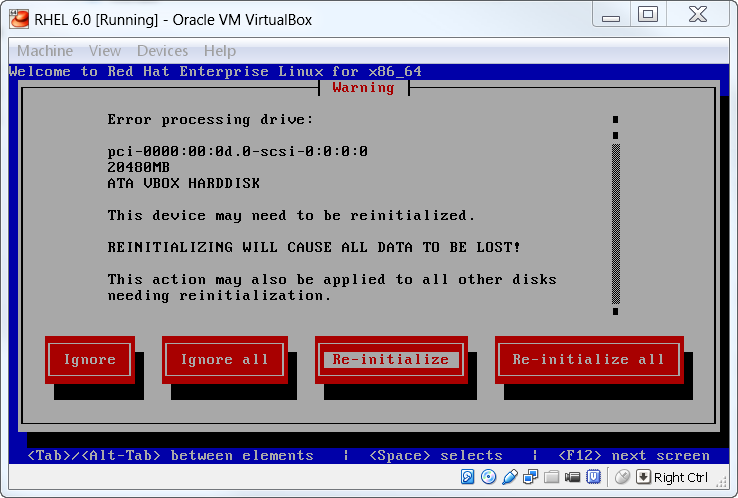
Next, set the Time Zone
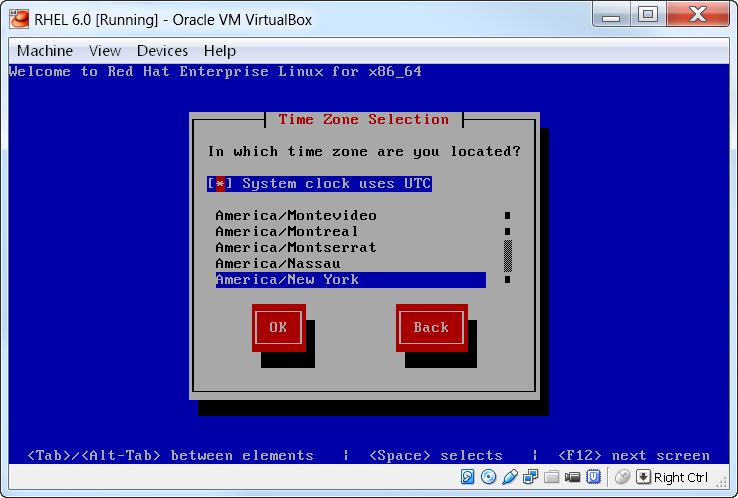
And now a root password
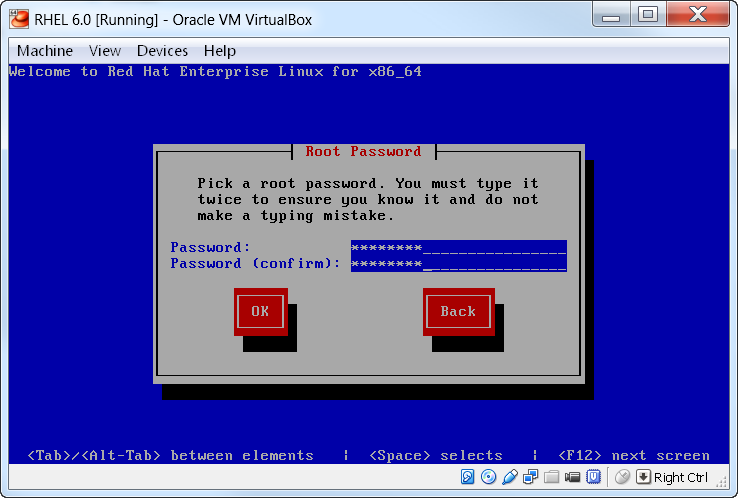
Next we will use the entire drive for the OS
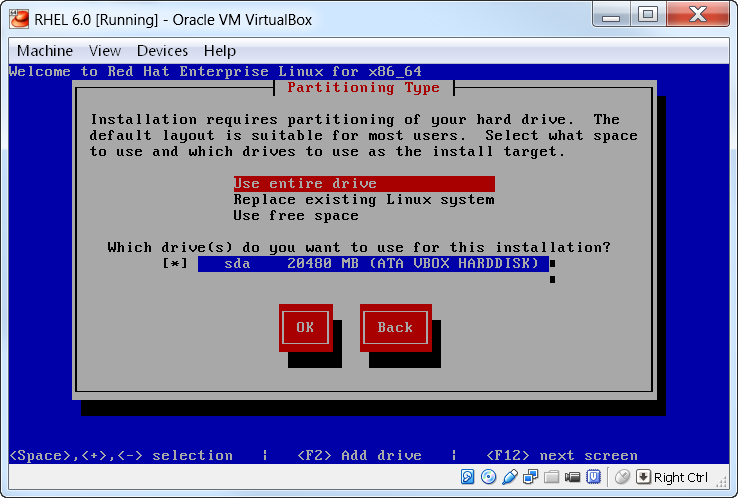
Write the changes to the disk to continue
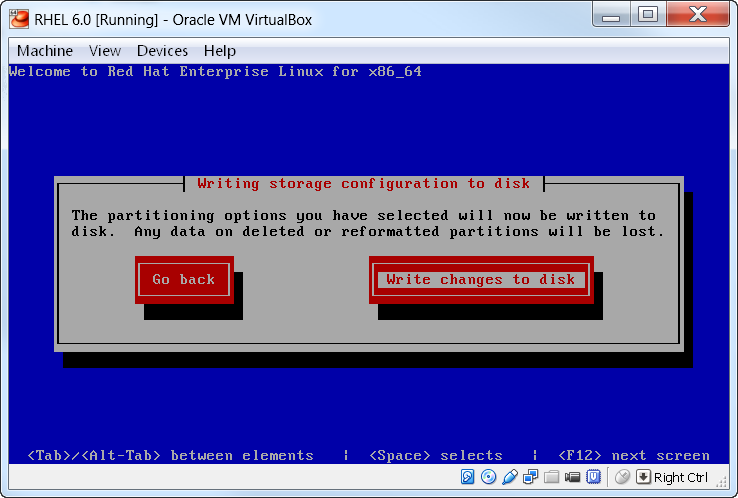
The Install should start, and will take a few minutes depending on the speed of your system.
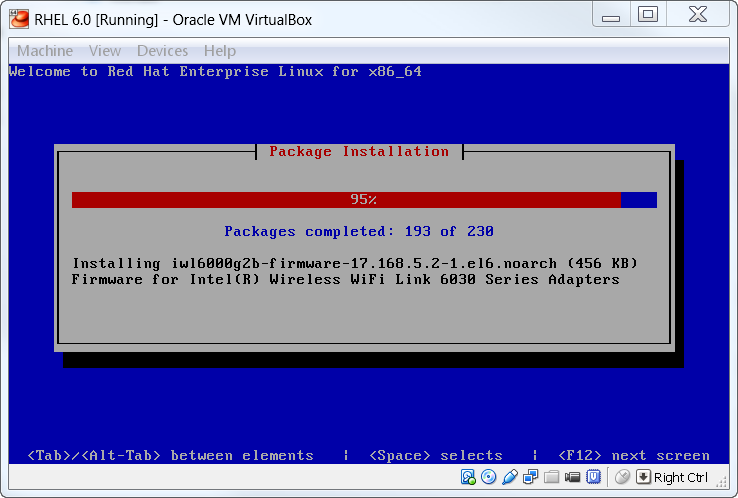
When done, we are prompted for a reboot. If you changed the boot order, you should boot into RHEL.
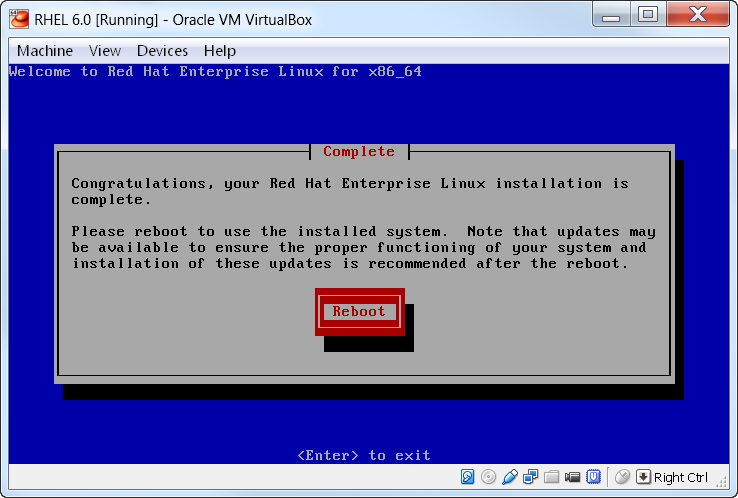
After we reboot, we need to enable the network. Log in as root, and “cd /etc/sysconfig/network-scripts” and vi the file ifcfg-eth0
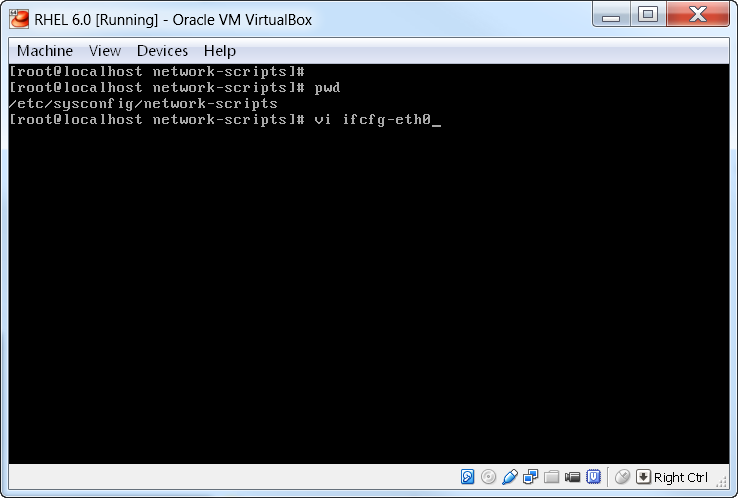
We will need to verify that the ONBOOT is set to yes, and that the BOOTPROTO is set to dhcp. This will allow the system to dhcp an address. The HWADDR will be different on your system, and normally should not need to be changed.
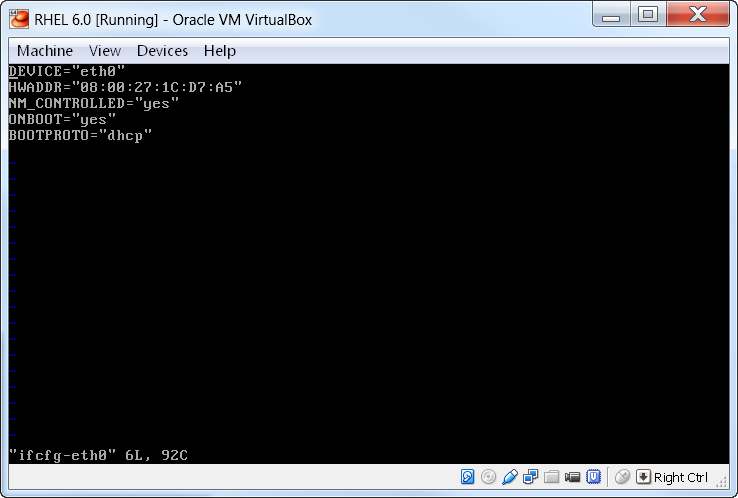
Save the file and restart the network stack, using the command “service network restart”
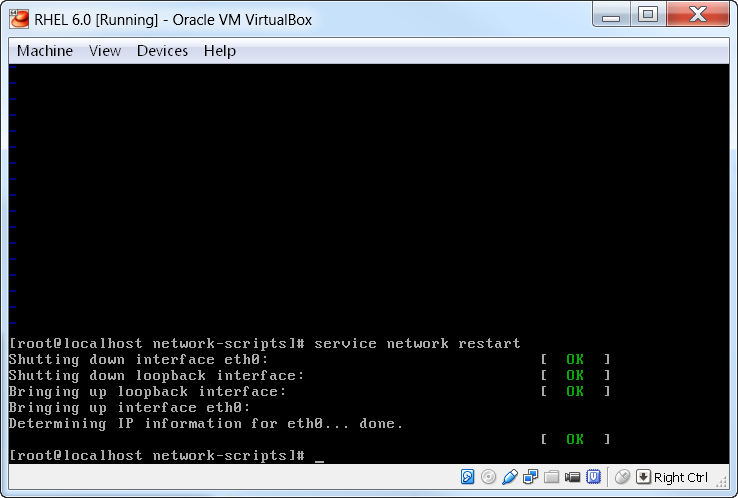
We can now test, by pinging a server
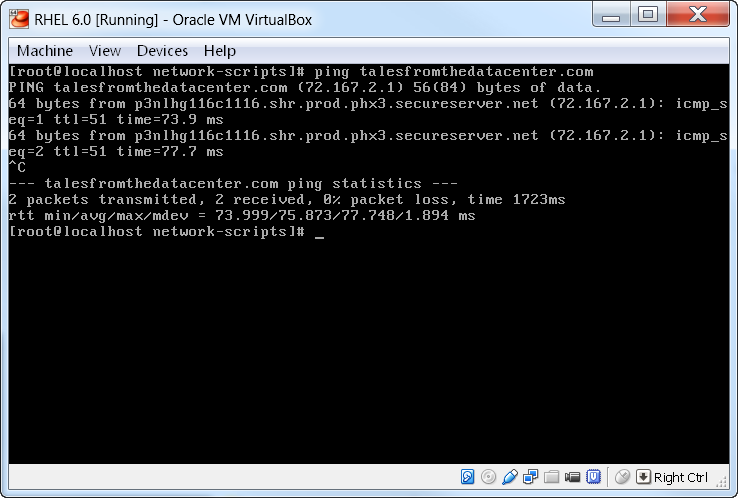
Congratulations, you are now ready to start the Hands On Lab , and upgrade this RHEL system to Oracle Linux.